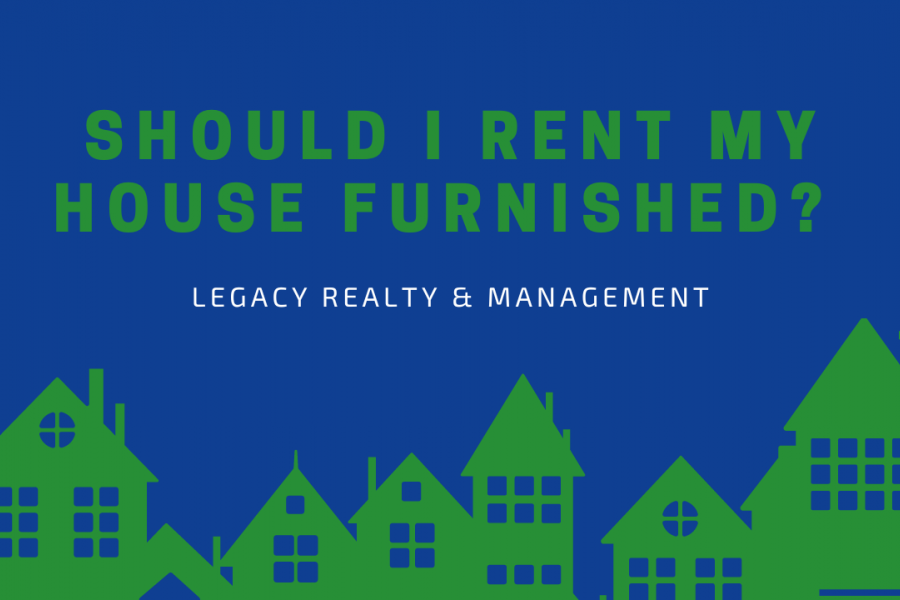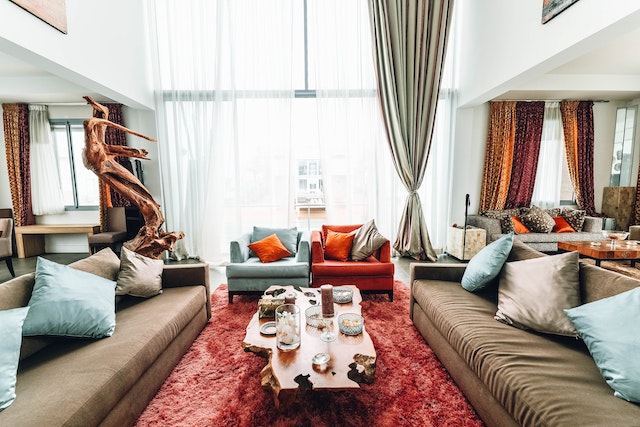
Are you a homeowner wondering if you should rent out your house? One question you may be asking is whether or not to offer your property fully furnished or unfurnished.
The choice between renting a furnished or unfurnished house can significantly impact your rental income, tenant pool, and overall success as a property owner. In this blog post, we'll delve into the pros and cons of renting a furnished house. We’ll provide you with valuable insights to help you make an informed decision.
Pros of Renting a House Furnished
Renting out your house furnished can bring many benefits for landlords. Here are a few positive aspects of offering a furnished rental property.
- Convenience for Tenants: Renting a furnished house saves tenants the time, effort, and expenses of purchasing and moving furniture during the move-in process. This convenience can be a significant selling point for potential renters.
- Higher Rental Income Potential: Furnished rentals often command higher rental rates compared to unfurnished properties. The added value of providing furniture, appliances, and other essentials can justify a higher monthly rental price, potentially increasing your rental income.
- Great for Short-Term Tenants: Furnished rentals are more attractive to short-term tenants, such as tourists, business travelers, or people relocating for a temporary period. This can lead to a more consistent flow of tenants and less risk of prolonged vacancies.

- Reduced Tenant Turnover: Furnished rentals tend to have longer tenancies since tenants are less likely to move frequently due to the hassle of moving furniture. This can save you money on turnover costs and avoid frequent advertising for new tenants.
- Higher Property Value: Furnished properties may have a higher perceived value, which can be advantageous when it comes to property valuation and potential future resale.
- Increased Demand: Furnished properties often have higher demand, especially in popular rental markets, leading to faster rentals and fewer periods of vacancy.
Cons of Renting a House Furnished
While there are advantages to renting a furnished house, it's essential to consider the potential drawbacks. Here are some cons to keep in mind:
- Increased Wear and Tear: Furnished properties are more prone to experiencing wear and tear on furniture and appliances. Tenant turnover and regular use can lead to damages that require repairs or replacements, resulting in additional expenses for landlords.
- Higher Initial Investment and Ongoing Maintenance Costs: Furnishing a rental property requires a significant upfront investment to purchase furniture and essential items. Also, landlords are responsible for ongoing maintenance and repairs, which can be more frequent and costly than unfurnished properties.

- Limited Flexibility for Tenants to Personalize the Space: Renting a furnished house means tenants have less flexibility to personalize and decorate the space according to their preferences. Some tenants may prefer the freedom to bring their furniture and create a living environment that reflects their style and taste.
- Higher Insurance Premiums and Security Concerns: Furnished properties may come with higher insurance premiums due to the increased value of the contents. Additionally, there may be security concerns for protecting the furniture and appliances from theft or damage, particularly protecting outdoor furniture.
Factors to Consider When Deciding
When deciding whether to rent your house furnished or unfurnished, it's crucial to consider various factors. Here are key considerations to guide your decision-making process:
- Location and Rental Market Trends: Evaluate the rental market trends in your location. Research whether furnished rentals are in high demand or if tenants in your area tend to prefer unfurnished properties. Market conditions and local rental trends can influence your decision.
- Furnishing Costs and Budget: Determine the upfront furnishing costs and assess your budget. Consider the cost of purchasing furniture, appliances, and other decor. Ensure the investment aligns with your financial capabilities and expected return on investment.
- Maintenance and Replacement Costs: Factor in furnished rentals' maintenance and replacement needs. Understand that furniture and appliances may require more frequent repairs or replacements than unfurnished properties. Consider the time, effort, and costs involved in maintaining the furnishings over the course of renting.

- Legal and Liability Implications: Familiarize yourself with the legal implications of offering a furnished rental. Understand your responsibilities as a landlord, such as complying with housing standards and providing a safe and habitable home.
Tips for Marketing and Managing Furnished Rentals
- Highlighting the Benefits of Rental Listings and Advertising: When marketing your furnished rental, emphasize its convenience and value to potential tenants. Highlight features include a fully equipped kitchen, stylish furniture, and appliances. Use descriptive language and appealing visuals to showcase the unique selling points of your furnished property.
- Properly Stage and Present the Property: Staging is crucial for attracting tenants to a furnished rental. Arrange the furniture and decor in an appealing and functional manner. Create a welcoming ambiance that allows potential tenants to envision themselves living in the space. Ensure everything is clean, well-maintained, and presented in its best condition.
- Setting Appropriate Rental Rates and Security Deposits:When determining rental rates, consider factors such as the quality of furnishings, location, market demand, and any additional services included (e.g., utilities, internet). Research the local rental market to gauge competitive rates for similar furnished properties. Additionally, establish a reasonable security deposit to protect against potential damages.

- Establishing Clear Rules and Expectations: Clearly define the rules and expectations for your furnished rental. Outline any restrictions on furniture rearrangement, storage, hanging frames, painting, smoking, or pet policies. Communicate guidelines for the care and maintenance of the furnishings and appliances. Provide a detailed inventory list, and document the condition of the items before a tenant moves in.
- Regular Inspections and Maintenance Routines: Implement a regular inspection schedule to ensure the furnishings and appliances are well-maintained. Address any repairs or maintenance needs promptly to prevent further damage. Regularly check the condition of furniture, appliances, and other items to assess their lifespan and plan for potential replacements.
Conclusion
Deciding whether to rent your house furnished or unfurnished requires careful consideration of various factors. By implementing these tips, you can effectively market your furnished rental, attract quality tenants, and maintain the property in optimal condition.
While renting a furnished house offers convenience and higher rental income potential, it also comes with increased wear and tear, higher initial costs, and potential insurance and security concerns.
By weighing these factors and considering tips for marketing and management, you can make an informed decision that aligns with your goals.
Contact Legacy Realty & Management to learn more about our property management services and how we can assist you in managing your rental property.
